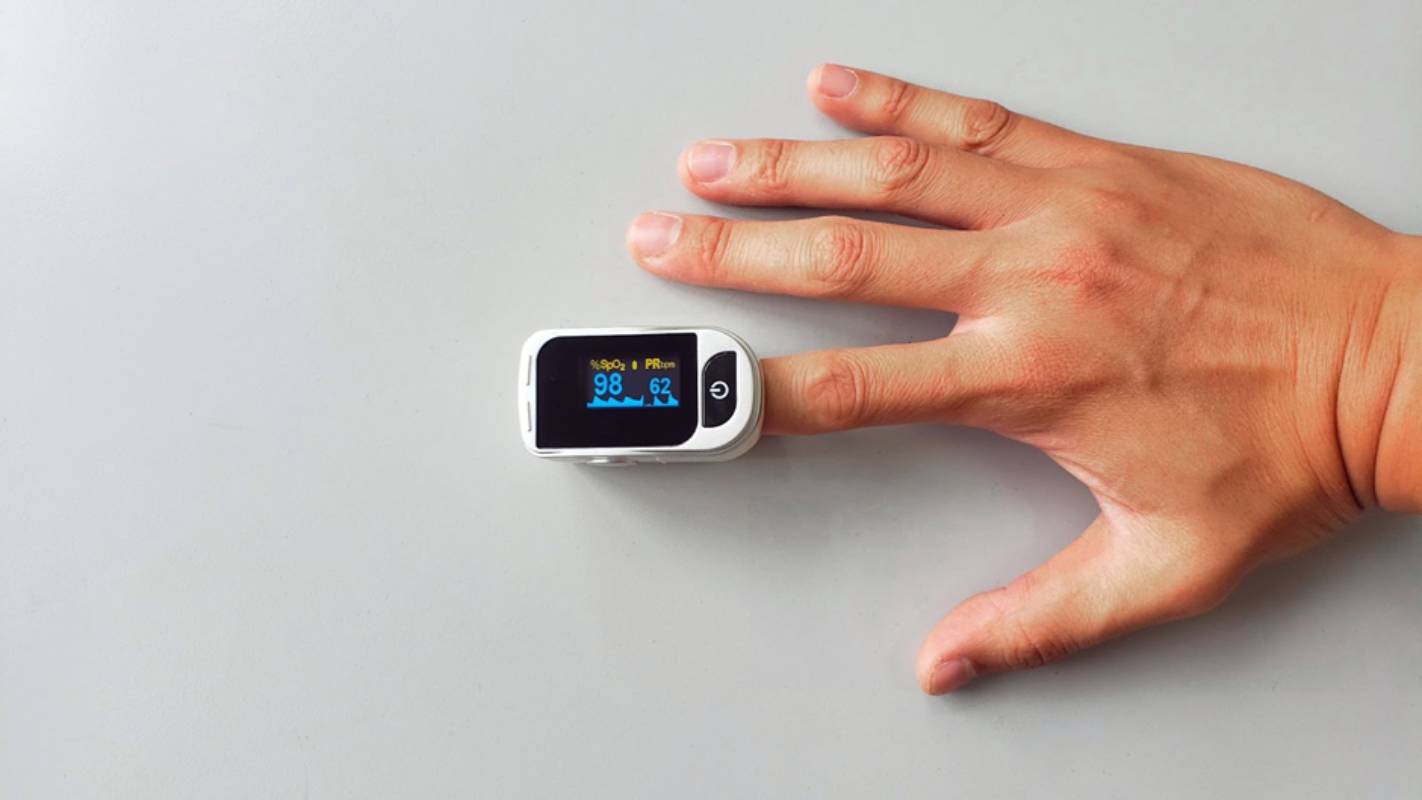What’s A Pulse Oximeter & Should I Invest In One For My Home?
How a small medical device can tell you valuable information about your health if you’re suffering from Covid-19 or another respiratory illness.
Pulse oximeters have become the go-to gadget during the global pandemic. But what is this gadget, and why is it in such high demand? As a result of the COVID-19 outbreak, hoards of patients are being admitted to hospitals with dangerously low oxygen levels. Prolonged periods of low oxygen levels in the blood can cause a host of serious health complications, and in severe cases, even death.
A pulse oximeter is a simple home medical device that measures oxygen levels and alerts patients when their blood oxygen levels are low. This allows patients suffering from COVID-19 or other respiratory illnesses to closely monitor oxygen levels and take action if they notice a sudden change. While health officials remain divided on whether or not to recommend the use of pulse oximeters, many doctors are advising their patients to invest in one.
If you’re thinking of purchasing a pulse oximeter for your home and need a little guidance, then this article is for you. We’ll delve into what a pulse oximeter is, how it works, and how to read the results.
Table of Contents
What is a pulse oximeter?
A pulse oximeter is a small gadget that resembles a clip. It clips onto your finger and reads your blood oxygen level and heart rate in a matter of seconds. The results are indicated on the small display. Generally speaking, a healthy blood oxygen reading is between 95% and 98%, although readings may be slightly lower for people with existing health conditions. If your oxygen reading falls to around 93% or lower, consult your doctor immediately.
Pulse oximeters also indicate your heart rate. As a rule of thumb, a healthy resting heart rate for an adult is between 60 to 100 beats per minute. Serious athletes may dip lower than 60.
How does it work?
Pulse oximeters work by beaming different wavelengths of light through your finger. They target the protein molecule found in your blood known as haemoglobin, which carries oxygen. The amount of wavelengths of light haemoglobin absorbs varies depending on the level of oxygen present. The percentage displayed on your pulse oximeter indicates the level of oxygen saturation in your blood. This takes a few seconds and is a routine check when you visit your doctor.
Tips for reliable results
Pulse oximeter results are usually quite reliable, but there are a few measures you can take to increase your chances of an accurate reading. Let’s take a look:
- Warm your hands up before you take the test
- Measure your oxygen levels a few times a day to account for fluctuations
- Try taking your readings in different positions, such as lying flat, sitting upright, or walking
- Don’t expose the pulse oximeter to direct light
Which finger should I use?
The most common practice amongst medical professionals is to attach the device to the index finger of your dominant hand. Having said that, studies indicate that the third finger on the dominant hand and the thumb on the dominant hand give the most accurate readings.
What factors can skew the results?
Research suggests that pulse oximeters may be slightly less accurate for people with dark skin because of how darker skin pigments absorb light. While pulse oximeters still work on dark skin, it’s advisable to monitor oxygen levels more regularly. It’s estimated that pulse oximeters typically give a reading 2% higher than it actually is for people with dark skin, so consult a medical professional if your blood oxygen reading drops to 94 as opposed to 93.
What’s A Pulse Oximeter & Should I Invest In One For My Home? Pulse oximeters may also be less accurate when used on people with long nails, false nails, or wearing nail polish. Therefore it’s advised to remove nail polish and clip nails before taking your reading.
What should I do if my oxygen level drops?
If your oxygen level reading falls to 92 or lower, stay calm and contact your doctor. Spotting a dip in oxygen levels early on gives your doctor time to strengthen your blood oxygen level before any more serious symptoms set in. Doctors have noticed that COVID-19 can cause patients’ oxygen levels to drop dangerously low without any obvious symptoms such as shortness of breath, blue lips, or fatigue. Such a sudden drop in oxygen would normally incite seizures, unconsciousness, or other signs of distress, which suggests that oxygen levels in COVID-19 patients are dropping over the course of a few days without them realising.
What risks are involved with monitoring oxygen levels at home?
Pulse oximeters are generally reliable, but there is a possibility of an inaccurate reading or the patient not using the gadget correctly. What’s A Pulse Oximeter & Should I Invest In One For My This is why it’s important to monitor levels regularly and listen to your body. If your reading comes back normal but you are experiencing other symptoms related to low oxygen levels —such as trouble breathing, confusion, a fever, or severe fatigue—contact your doctor immediately.
Key Takeaways
Demand remains high for pulse oximeters. If you can’t find one right away, check out this list of medical sensor manufacturer. This small device could help you or a loved one from spotting signs of respiratory distress early. If you’re concerned about your oxygen levels, always consult a medical professional immediately.






